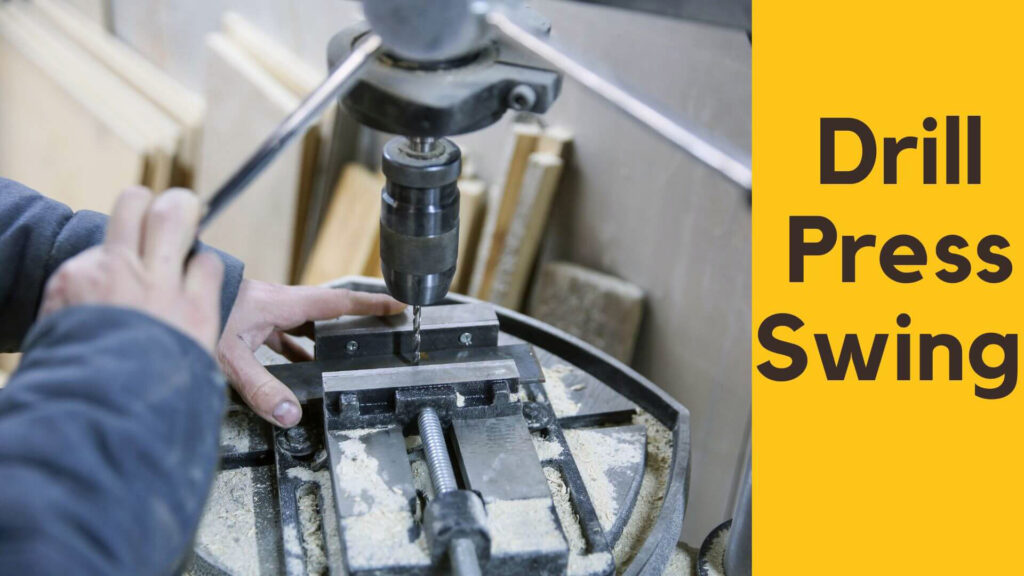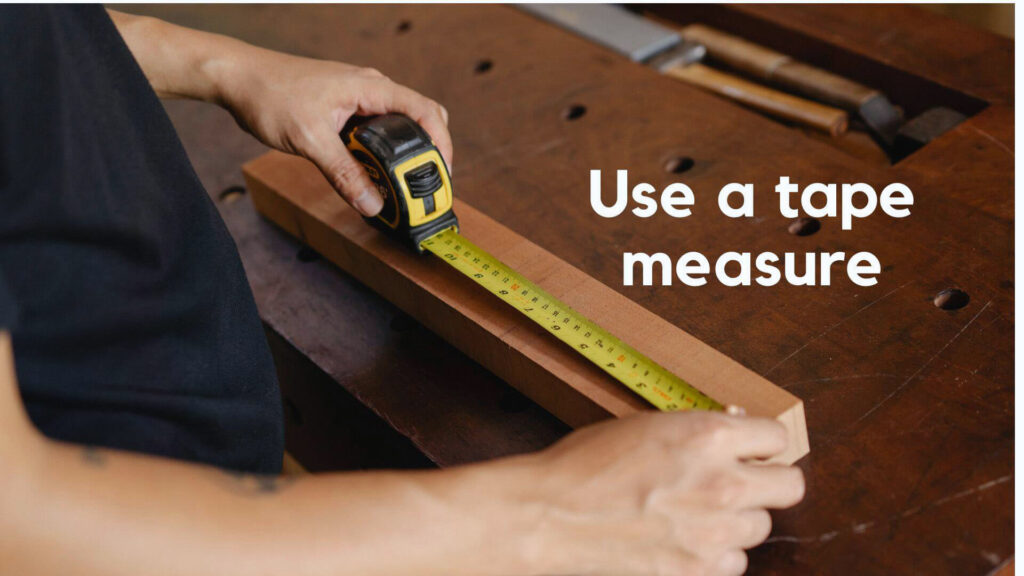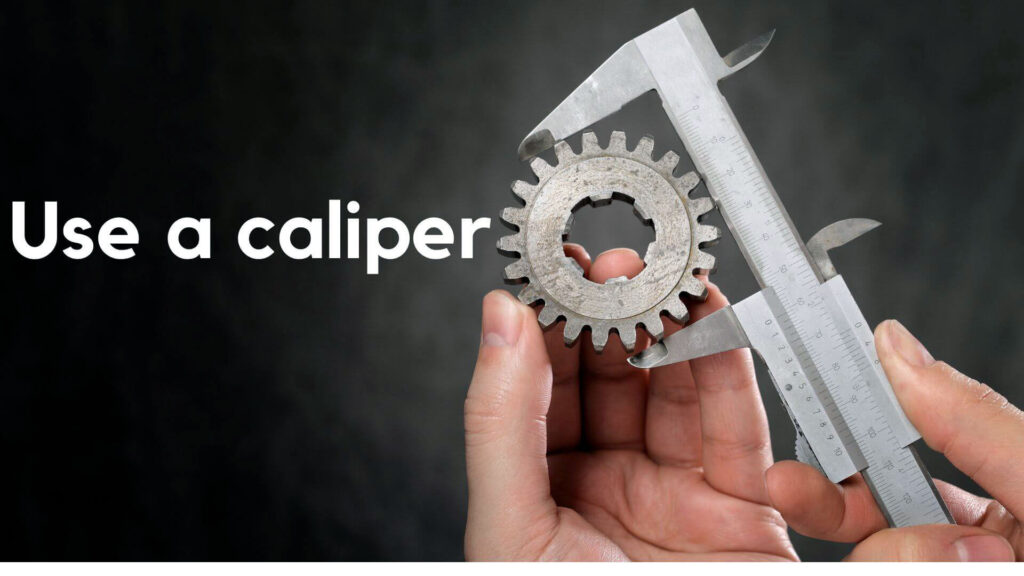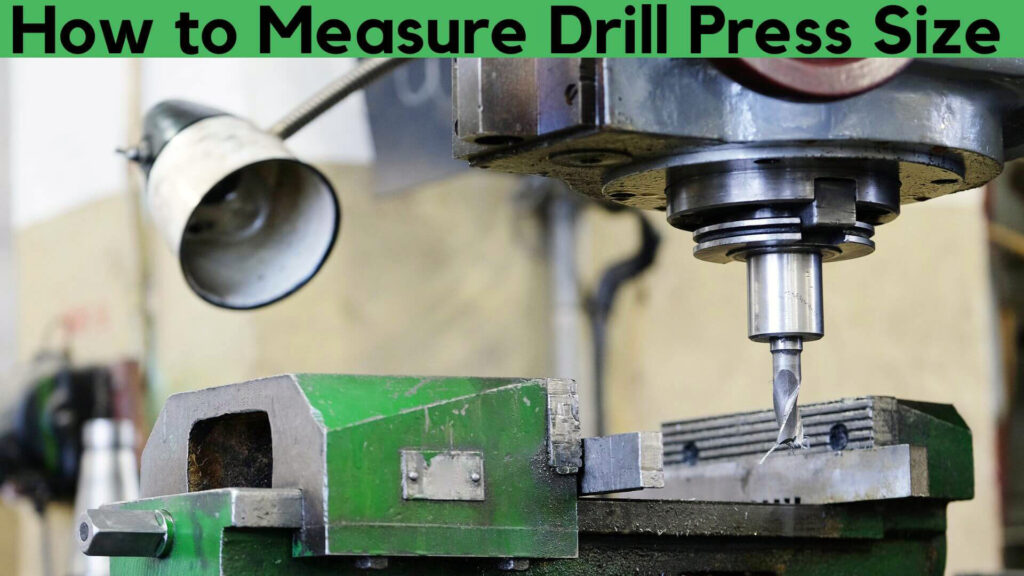When purchasing a drill press, it is essential to have a Regardless of how you measure it, always make sure to go over your measurements with your drill press manufacturer before making your purchase.
An accurate understanding of the size that is best for your needs. There are many different ways to measure drill press size, and the best way to measure it depends on the application for which you are using the drill press.
To measure the size of your drill press, you will need to take the following measurements:
- The distance between the spindle’s center and the column’s edge
- The diameter of the spindle
- The quill travel
- The throat depth
- The height of the table
Once you have these measurements, you can use them to calculate the size of your drill press.
Table of Contents
What is a Drill Press Swing?

The drill press swing determines the most comprehensive component where you can drill a center hole with this drill press.
It is based on the distance between the central column of the drill press and the spindle multiplied by two. Benchtop models typically offer less swing than their full-size counterparts.
Drill presses come in a variety of sizes. It would help if you determined how much material you can handle with the media and selected the size that suits your needs.
A general rule of thumb is to multiply the linear width of the workpiece by the number of teeth on the milling bit. For example, a drill press with a 3-inch (7.62 cm) linear width and a 1-1/4 inch (3.81 cm) milling bit will have a 6-inch (15.24 cm) swing.
To measure the size of your drill press:
- Use a piece of plywood the same width as the linear width of your press.
- Mark the plywood at 4-inch (10.16 cm) intervals and measure the distance between the marks.
- Record this information in inches on a notepad or in your drill press manual.
Drill presses come in different sizes, so you need to measure how much material you can handle with the media and select the size that best suits your needs.
How to Measure Drill Press Size Simple Process
Measuring the Quill
First, extend the Quill to its entire length to measure the Quill of a drill press. Then, using a tape measure, measure from the base of the Quill to the end of the chuck. The Quill is the part of the drill press that extends and contracts to adjust the drilling depth.
Measuring the throat
The throat of a drill press is measured from the center of the spindle to the column at its closest point. To measure, first find and mark the center of the spindle.
Next, use a tape measure or ruler to find and mark the closest point on the column. Finally, measure from the center of the spindle to the queue at the nearest point.
The throat is an important measurement because it determines how large a workpiece can be placed on the drill press table while still allowing the bit to reach the workpiece’s surface.
Measuring swing
The swing is determined by measuring the distance from the spindle axis (CenterPoint between where bit enters workpiece and where bit exits workpiece) to the farthest points on both sides of the drill press column or frame.
Removing any attachments or accessories (e.g., guard) that are in the way of the measuring tape or ruler may be necessary to measure the swing.
Additional Considerations
- Clearance Height: If you’re working with taller workpieces, consider the clearance height – the maximum distance from the table to the chuck/spindle.
- Quill Travel: Quill travel refers to the maximum depth the spindle can travel vertically. It’s essential for drilling deeper holes.
Tips for Measuring Drill Press Size
Use a tape measure

To accurately measure your drill press, it’s essential to use a tape measure. You’ll want to measure the Quill, throat, and swing.
Use a caliper

You can also use a caliper if you don’t have a tape measure. This will give you a more precise measurement than using a tape measure.
Use a micrometer
For the most accurate measurement, you can use a micrometer. This is the best option if you’re looking for precision.
Kye Factors to Consider When Buying a Drill Press
Size
The size of the drill press is an essential factor to consider when buying a drill press. The size of the drill press will determine the range of motions the drill can make. The size of the drill press will also determine the power and torque the drill can generate.
Weight
The weight of the drill press is another factor to consider when buying a drill press. The importance of the drill press will determine how stable the drill is during operation. A heavier drill press will be less likely to vibrate during use, resulting in more accurate drilling.
Horsepower
Horsepower is a measure of the power output of the motor on the drill press. A higher horsepower rating will allow the drill to operate at higher speeds, which can help drill through more challenging materials.
Speed
Speed measures how fast the spindle on the drill press rotates. A higher speed allows for faster drilling but may also cause more wear on Drill bits.
Chuck size
The chuck size is another essential factor when buying a Drill Press. The chuck size determines the maximum diameter of the Drill bit that you can use with the Drill Press.
A larger chuck size will allow for drilling through thicker materials but may also increase the weight and cost of the Drill Press.
What Size of Drill Press Do I Need?
If you’re in the market for a drill press, one of the first questions you’ll need to answer is: what size of drill press do I need?
There are a few different ways to measure the size of a drill press. The most common way is to measure the throat, which is the distance from the center of the chuck to the column. The throat is usually between 8 and 16 inches on most drill presses.
Another way to measure the size of a drill press is by the swing, which is the measurement from the center of the chuck to the edge of the table. The swing is usually between 12 and 20 inches on most drill presses.
Finally, you can also measure the size of a drill press by the horsepower (HP) rating. The HP rating will show how much power the drill press can generate. Drill presses typically have a 1/2 to 1 HP rating.
Now that you know how to measure drill press size, you can start shopping for the perfect drill press for your needs!
FAQS About How to Measure Drill Press Size
What is the size of a drill press in metrics?
A metric drill press is 750 mm wide.
Why do I need to measure my drill press size?
Different drill presses will have another size table.
Knowing your drill press table size is essential to ordering the suitable material.
What is a standard drill press size?
A standard size drill press is 3-1/2″ by 7-1/2″
How do I measure my drill press?
The drill press is a machine you can use to bore holes in different materials, such as wood and metal. It is an essential tool for woodworking and many other industries. The size of the drill bit determines the size of the hole that it can create.
You will need to measure the diameter of your drill bit, then measure the depth that you want your hole to go into your material. Once you have these measurements, you can determine what size drill press you need to use.
Last Word
When choosing the right drill press for your needs, size is an essential factor to consider. With that in mind, knowing how to measure drill press size is necessary.
There are a few different ways to do this, but the most common method is to use a tape measure.
Another thing to remember when measuring drill press size is that a few factors can affect the size of the machine.
These include weight, horsepower, speed, and chuck size. All of these factors should be considered when making your final decision.

Hey, I am Shihab Uddin, I’m a huge fan of DIY crafts. My workshop is where I spend most of my spare time, and I’m always working on some project. To that end, I’d like to share some of my knowledge and experience with you in power tools, woodworking, and other specialized materials fabrication.
I will guide you with genuine knowledge that can assist you with deciding whether a drill is appropriate according to your requirements or not. If you want to find the best drill and know which type of drill is most suited for your needs, then I can guide you with my expertise. My passion lies in helping others find the correct products they need at an affordable price.


